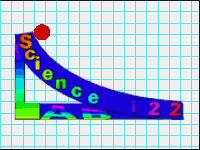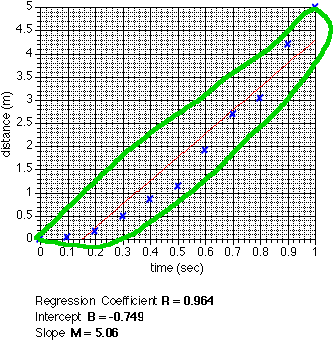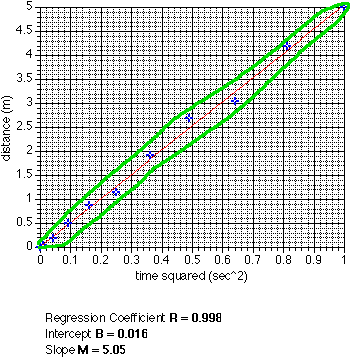 |
The regression line is the "best fit" straight line. As this graph
shows it is possible to draw a line even when the data is obviously not linear. Notice
how far some of the points are from the line. In fact this is a parabola and indicates
a second power relationship.
Click on the graph to see the graph with the statistics.
|






